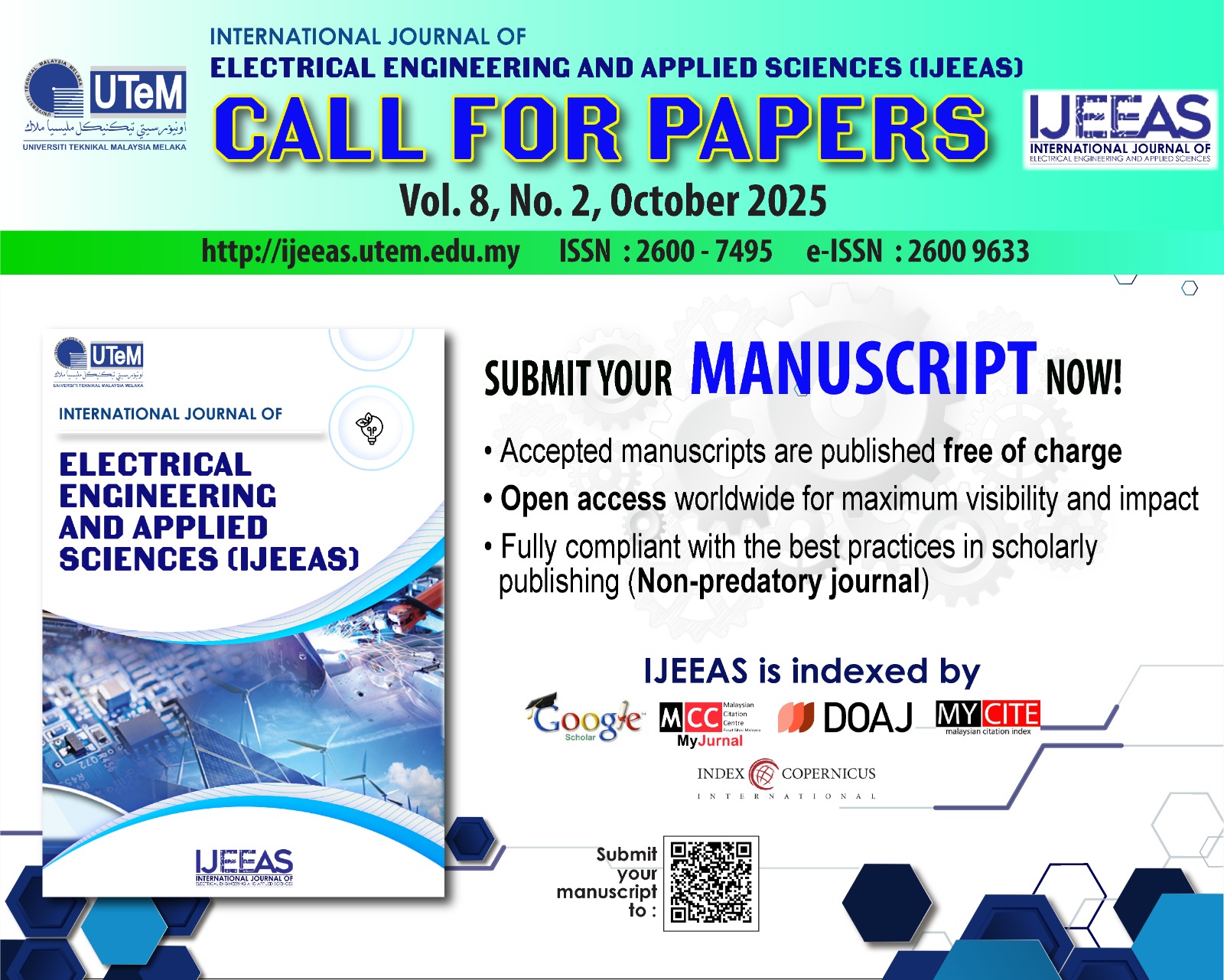Design of Electro-Pneumatic Exoskeleton Robot for Upper Limb Actuation
Keywords:
exoskeleton robot, electro-pneumatic, flexion, upper-limbs, orthosisAbstract
Most of tasks in daily activities are performed by upper-limbs. Physically weak persons such us elderly, injured or disabled person need to perform most of the daily activities with the help of exoskeleton robot. Therefore, various kind of exoskeleton robots have been developed in order to assist the physically weak person in their daily life. The current existing researches related to exoskeleton robot need to solve problems that related to suitable materials which is light and strong and also to work on the portable power supply that could power up the system for a long time independently. The proposed of this research project is to develop an electro-pneumatic powered shoulder orthosis for flexion motion only. This electro-pneumatic powered shoulder orthosis is actuated by a pneumatic cylinder which is placed at the backpack.For technical simplicity, this shoulder orthosis used an external power supply unit. performance analysis is carried out in terms of payload test. This shoulder orthosis need to lift up load (1kg, 2kg, 3kg, 4kg and 5kg) on 45o flexion motion. For each load, this shoulder orthosis need to repeat the test for three times. The time for each complete flexion motion is recorded. All the data is recorded in tables and presented in graphs. It is found from the experiments that the time taken for the cylinder to complete the flexion motion is increasing with load. This is because the cylinder needs to overcome the load as well as the gravitational force in order to complete the 45o flexion motion. As for the velocity, it is decreasing with the increasing of load. This is because, as the load increases, the cylinder becomes slower and it takes some time to complete the flexion motion.
Downloads
References
J. Klein, S. J. Spencer, J. Allington, K. Minakata, R. Smith, J. E.Bobrow, and D. J. Reinkensmeyer, “Biomimetic orthosis for the
neurorehabilitation of the elbow and shoulder (BONES),” in 2ndIEEE RAS & EMBS International Conference on Biomedical Robotics and Biomechatronics, pp. 535–541, Oct. 2008.
F. Martinez, I. Retolaza, a. Pujana-Arrese, a. Cenitagoya, J.Basurko, and J. Landaluze, “Design of a five actuated DoF
upper limb exoskeleton oriented to workplace help,” in IEEE RAS & EMBS International Conference on Biomedical Robotics
and Biomechatronics, pp. 169–174, Oct. 2008.
K. Kiguchi, K. Kado, and Y. Hayashi, “Design of a 7DOF upper-limb power-assist exoskeleton robot with moving shoulder
joint mechanism,” in IEEE International Conference on Robotics and Biomimetics, pp. 2937–2942, Dec. 2011.
V. Durbha and P. Li, “Independent metering of pneumatic actuator for passive human power amplification,” in American
Control Conference (ACC), pp. 3317–3322, July 2010.
W. Banchadit, A. Temram, T. Sukwan, P. Owatchaiyapong and J. Suthakorn, “Design and implementation of a new motorizedmechanical
exoskeleton based on CGA patternized control,” in IEEE International Conference on Robotics and Biomimetics (ROBIO), pp. 1668-1673, Dec. 2012.
Downloads
Published
How to Cite
Issue
Section
License
Authors who publish with this journal agree to the following terms:
- Authors retain copyright and grant the journal right of first publication with the work simultaneously licensed under a Creative Commons Attribution License that allows others to share the work with an acknowledgement of the work's authorship and initial publication in this journal.
- Authors are able to enter into separate, additional contractual arrangements for the non-exclusive distribution of the journal's published version of the work (e.g., post it to an institutional repository or publish it in a book), with an acknowledgement of its initial publication in this journal.
- Authors are permitted and encouraged to post their work online (e.g., in institutional repositories or on their website) prior to and during the submission process, as it can lead to productive exchanges, as well as earlier and greater citation of published work (See The Effect of Open Access).







